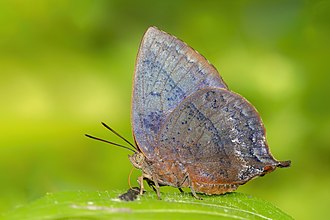**1. History of Nutrition:**
– Scientific analysis of food and nutrients began during the chemical revolution in the late 18th century.
– Modern nutrition science started in the 1910s with the identification of individual micronutrients.
– Thiamine was the first vitamin chemically identified in 1926, and Vitamin C was identified as protection against scurvy in 1932.
**2. Nutrients and Nutritional Groups:**
– Nutrients provide energy and physical components for survival, growth, and reproduction.
– Macronutrients are primary substances required by organisms, while micronutrients are needed in trace amounts.
– Nutrient cycles involve the movement of inorganic matter through soil, organisms, air, or water.
– Different nutritional groups include heterotrophs, autotrophs, mixotrophs, phototrophs, chemotrophs, organotrophs, and lithotrophs.
**3. Diet and Nutrition in Organisms:**
– A healthy diet improves physical and mental health by providing essential nutrients.
– Animals are heterotrophs that consume other organisms for nutrients.
– Humans are omnivores consuming a variety of foods, and poor nutrition can lead to deficiency-related diseases.
– Nutrition in domesticated animals is managed through animal feed, with specialized pet food addressing specific nutritional needs.
**4. Nutrient Cycle and Plant Nutrition:**
– Nutrient cycles involve the continuous movement of mineral nutrients like carbon, sulfur, nitrogen, water, phosphorus, and oxygen.
– Plants obtain nutrients from inorganic substances in the soil and atmosphere.
– Essential nutrients for plants include carbon, hydrogen, oxygen, nitrogen, and sulfur.
– Plants uptake elements from the soil through roots and from the air through leaves.
**5. Behavior, Health, and Nutrition:**
– Animal behavior is influenced by nutrition, impacting migration and breeding patterns.
– Advanced food processing methods enhance food safety and simplify production.
– Herbs, spices, and additives are used to improve flavor, safety, and nutritional content of food.
– Proper nutrient cycling is essential to maintain oxygen levels, climate, and ecosystem function.
Nutrition is the biochemical and physiological process by which an organism uses food to support its life. It provides organisms with nutrients, which can be metabolized to create energy and chemical structures. Failure to obtain sufficient nutrients causes malnutrition. Nutritional science is the study of nutrition, though it typically emphasizes human nutrition.

The type of organism determines what nutrients it needs and how it obtains them. Organisms obtain nutrients by consuming organic matter, consuming inorganic matter, absorbing light, or some combination of these. Some can produce nutrients internally by consuming basic elements, while some must consume other organisms to obtain pre-existing nutrients. All forms of life require carbon, energy, and water as well as various other molecules. Animals require complex nutrients such as carbohydrates, lipids, and proteins, obtaining them by consuming other organisms. Humans have developed agriculture and cooking to replace foraging and advance human nutrition. Plants acquire nutrients through the soil and the atmosphere. Fungi absorb nutrients around them by breaking them down and absorbing them through the mycelium.
